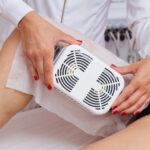Hand hygiene is one of those many overlooked practices, yet it stands as one of the most precious things for the maintenance of health and well-being. It can range from simple daily activities to a fitness routine wherein clean hands could prevent infections and illnesses. Read this blog further as we discuss hand sterilization’s importance, its role in hand hygiene and infection control, and how it can be implemented in your daily life.
Whether you are a fitness junkie, a responsible parent taking care of your family’s well-being, or a simple enthusiast who wants to enhance your hygiene, this post will help you out with all the information you need on how to keep healthy.

Why Is Hand Hygiene Important?
Prevention of Germ Spread
Your hands touch thousands of surfaces every day, bringing unwanted bacteria, viruses, and other germs into your life. But through proper hand sterilization, their risk of transferring them to you or others is cut into pieces by thousands. Touching your face, food, or even shared items invites them into your system and may lead to illness.
The Centers for Disease Control and Prevention believe that the best-proven measure that prevents one from catching sickness and helps in the prevention of spreading infections is through hand sterilization This must be done intensively when experiencing flu season or other outbreaks of contagious diseases.
hand sanitation and infection control are the first practices in infection control. Sanitizing your hands removes harmful pathogens from your skin, meaning you minimize the possibility of infections. The practices may be essential in more medical fields, but they can also be effective in everyday life. Hand washing using soap and water or sanitizers that contain at least 60% alcohol helps to quickly reduce the number of germs on your hands.
How to Properly Practice Hand Hygiene
When to Wash Your Hands?
You need to wash your hands at all critical times so that you are assured of being hygienic at all times. Here are the situations where hand sterilization and infection control are particularly important.
- Before and after preparing food
- Before eating
- After using the toilet
- After sneezing, coughing, or blowing the nose
- After touching dustbins or trash
- Before and after caring for an ill person
- After coming back from the gym or public place
Steps for Proper Hand washing
A Hand sanitation and infection control practice should use appropriate hand washing techniques. The guides below are step-by-step.
- Use clean running water that is warm or cold to wet your hands.
- Use soap and lather it up by rubbing your hands together. Pay attention to the following surfaces: the backs of your hands, areas between your fingers, and under your nails.
- Rub your hands together for at least 20 seconds. Sing or hum the “Happy Birthday” song twice to ensure you have gotten the right amount of time.
- Rinse hands with clean, running water.
- Dry hands on a clean towel or air dry.
- The Use of Hand Sanitizers
- While soap and water are the best way to eliminate germs, hand sanitizers may be used if soap is not available. Make sure that you use hand sanitizer with at least 60 percent alcohol. Rub your hands all over by working the sanitizer over them in order to get it well spread out and continue rubbing until your hands are dry.
Hand sanitizers can provide hand cleanliness and infection control when out, such as while traveling, at the gym, or attending events where soap and water facilities are unavailable.
The relation of hand hygiene and infection control to infection control
Infection Control and Hand Hygiene: Infection Control through Hand Sterilization
The concept of infection control and hand cleanliness goes side by side. In hospitals, fitness centers, or any public place, improper hand sterilization leads to the free spread of germs and the outbreak of infections. Therefore, proper hand sterilization becomes an active contribution towards infection control and the consequent withholding of harmful microorganisms.
For example, if in the gym with other gym mates where equipment is shared, good hand sterilization prevents the spread of germs through shared surfaces. Wash your hands before and after you work out to protect not just you but also others from possible infections.
Hand Hygiene in Healthcare Settings
More importantly, hand sterilization is crucial in healthcare. Health care-associated infections are typical and poor hand sterilization has been tracked as a primary cause. Medical professionals consider hand sterilization very seriously so that the risk of transferring germs from one patient to another is as low as it possibly can be. Patients and visitors must also ensure that they observe good hygiene practices to complement infection control.
Normal Mistakes in Hand Hygiene
Failure to Wash for a Long Enough Time
Another common mistake that is usually observed in the practice of hand sterilization is not performing hand sterilization for the requisite 20 seconds. Rattling off-hand sterilization can leave harmful bacteria or viruses on your skin, so it becomes ineffective.
Failure to Follow Specific Regions
Another common error is that one fails to clean every area of their hands. Interspaces between the fingers or under the nails are one of the areas most likely not cleaned. Moreover, one fails to wash the backs of their hands. Ensure that all areas of your hands are entirely cleaned for proper infection control.
Excessive Dependence on Hand Sanitizers
While hand sanitizers are very convenient, reliance on them only is not good practice. Sanitizers cannot kill all types of germs, nor can they work once the hands are visibly dirty or greasy. Therefore, each time, the best hygiene is to use soap and water.
Promotion of hand Sterilization in Daily Life
Incorporation of Hand Sterilization in Your Life
Being consistent is the simplest means of including hand sterilization in your daily practice. If reminders have to be placed or correlate hand washing with some aspects of daily routines, then it’ll become an easy routine. Include hand sanitizer in a gym bag, in the car, or at work, so they are always ready for when it’s time to clean their hands.
Teaching Children Hand sterilization
Educate children about hand sterilization from a very young age. Help them understand the part it plays against any form of infection and also the proper ways of washing your hands. The earlier the habits, the better your children set up themselves for a healthy lifetime.
Hand sterilization in Public Spaces
Hygiene of Hands at the Gym
The gyms are such places where diseases thrive and grow. The shared equipment, locker rooms, and closeness to other people provide an avenue through which an infection might happen. Practices that might help minimize the risks of exposure include proper hand sterilization before and after the workout, wipes around the equipment, and hand sanitizer.
Since you are exposed to unknown environments and surfaces most of the time when you travel, you come into contact with a wide range of germs. Airports, public toilets, as well as transportation systems could be some of the places where most of the bacteria hotspots are. Proper hand sterilization is most important for a healthy trip, which entails carrying hand sanitizer as well as washing your hands whenever you have access to this facility.
Hand Hygiene Role in the Protection of Susceptible Population
Protecting those at Greater Risk
The elderly, children and those with weakened immune systems are more likely to be infected. Good hand sterilization can mean the difference between protecting not just yourself but your vulnerable family members in the healthcare setting or at home.
Conclusion
Integrate hand washing into your daily activities as one of the easiest but most effective methods by which you and the people around you can be protected from infections, from properly washing your hands to using hand sanitizers in situ. All those good practices will be critical to maintaining good health and controlling the spread of germs. Hand sterilization and infection control go hand in glove, so by taking that little extra time to clean your hands, you are contributing to making the environment healthier for all.
Hand sterilization is always top of the list; if everyone does that, they will be pretty well on their way to even better health, both in fitness and in overall life activity.












